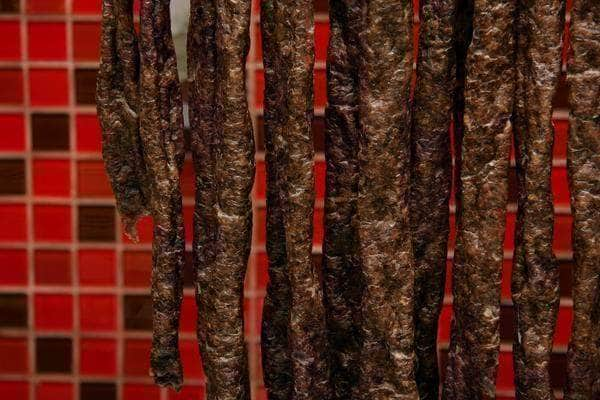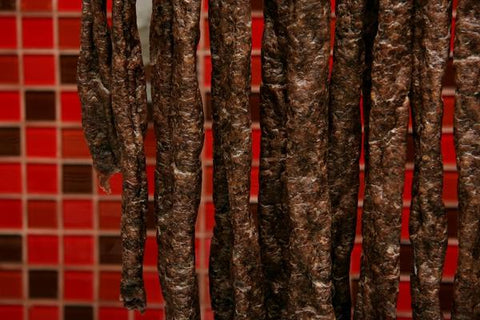What’s the difference between grain fed and grass fed beef?
Overall, grass fed beef contains less total fat, more omega-3 fatty acids, more linoleic acid and more vitamin E, than grain fed beef, giving it higher nutritional value. In addition, grass fed beef contributes less to climate change and less to food insecurity, as more of our grain crop goes towards feeding grain fed animals than it does to humans. Grass fed animals however, consume forage and take up less of our crop supplies.
How do I eat biltong?
The best part about biltong is that it is incredibly diverse. You can eat it in strips as a snack, which is perfect for people on the go like travellers and campers. You can also integrate it into your cooking. Biltong is the perfect addition to breakfast, lunch and dinner. Plus, you can use it to make delicious, mouth-watering appetizers at your next party. Check out some amazing recipes here.
How do I store my biltong?
Unlike most meat products, biltong does not need to be refrigerated. Instead, it should be stored at room temperature, in a cool, dry place. Once you’ve opened it, or you’ve used it in a recipe dish, you can store it in the fridge if you’d like. Biltong doesn’t expire, so it’s a great snack to buy in bulk and keep around the house for cooking or snacking.
Is biltong safe for my children to eat?
Absolutely! Since biltong is nutritious, tasty and natural, any person of any age should be safe to eat it. In fact, biltong is even used as a teething aid for children in some places because of its tough texture and salty taste.
Head over to our online store to pick up some biltong for you and your family today!

